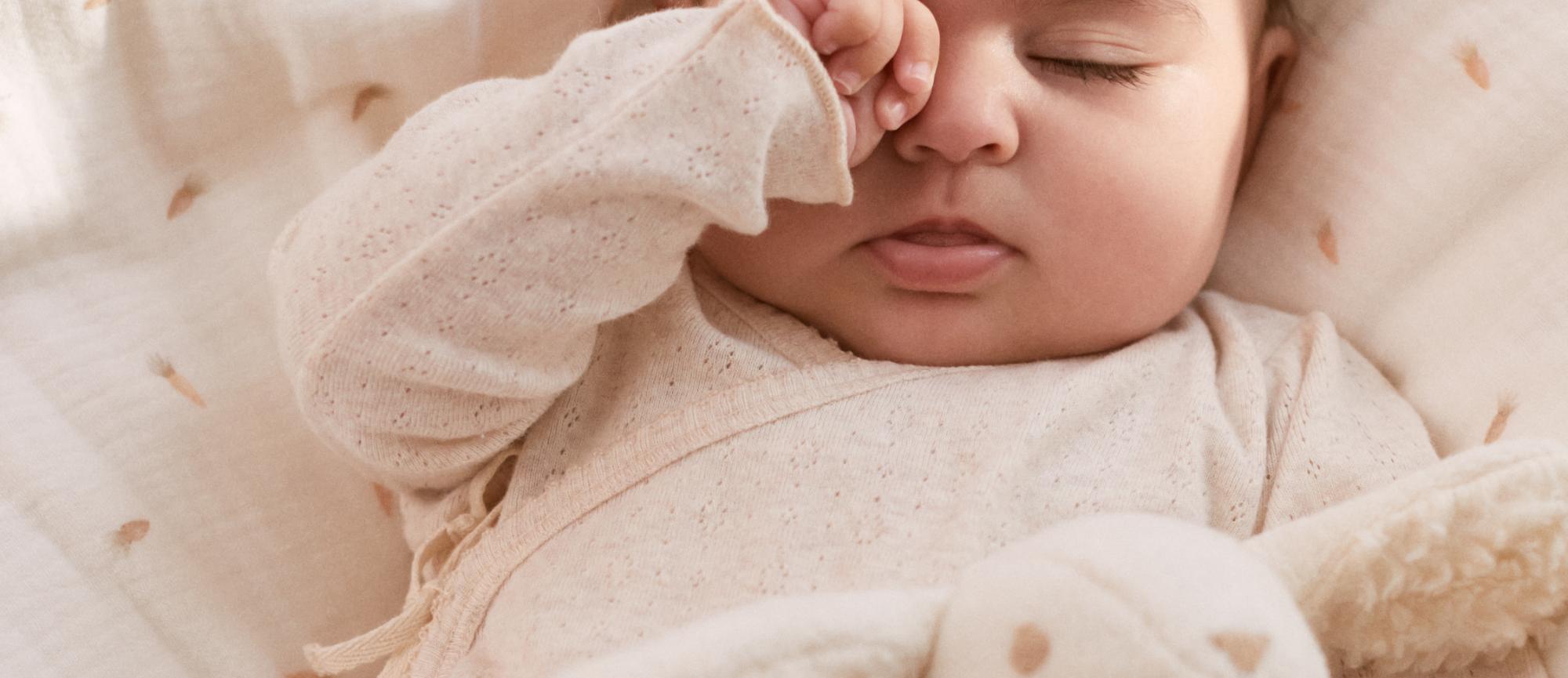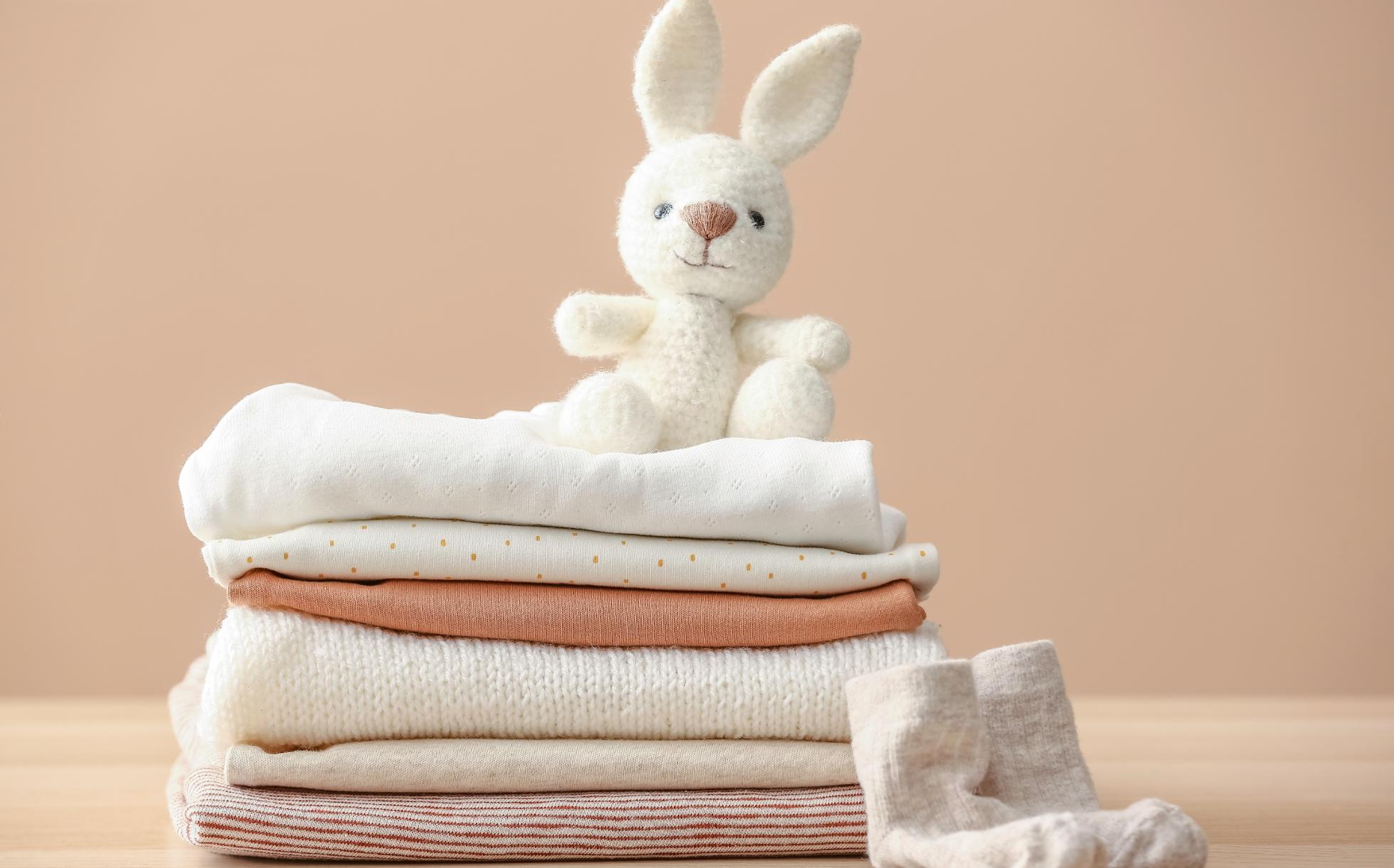
What parents don’t love planning and choosing baby and newborn clothes?
Indeed, once you enter this world, the first challenge is resisting the urge to buy all the wonderful items you come across. But we guarantee that there is much more to consider than just appearance, and when you take that into account, it becomes much easier to avoid the temptation of buying everything you see in the shops!
In reality, we know that parents' and caregivers' primary concern is with the baby’s comfort, safety, and well-being. What can be more challenging is translating these aspects into specific pieces of baby and newborn clothes.
That’s where we, at Owono Baby, are experts, and we’ll help you navigate the world of children's clothing and our store.
From selecting materials to choosing the types of baby and newborn clothes for different occasions and seasons, here are some guidelines on how to choose, care for, and maintain your baby’s clothes, as well as the best fabrics to ensure comfort for newborns.
Choosing baby and newborn clothes can be a daunting task, especially for first-time parents. To succeed in this mission, simply take the following criteria into account during the process:
Baby and newborn clothes should be as comfortable as possible, allowing the baby to move freely. Choose items with soft elastic bands and avoid tight clothing that could restrict movement or cause discomfort.
Since babies grow quickly, it’s common for parents to be tempted to buy larger clothing to make it last longer. However, if the baby and newborn clothes are too big, they can become uncomfortable and impractical. Ideally, choose sizes with a bit of room for growth but that fit the baby well.
To avoid disturbing the baby and make things easier for parents, choose clothing with simple fastening systems. Baby and newborn clothes with snap buttons, quality zippers, and wide head openings make dressing and undressing much easier.
Always choose baby and newborn clothes made from natural and organic materials, such as organic cotton. This is because, to avoid irritation or allergies, it’s important for the fabrics to be soft to the touch, allow the skin to breathe, and be free from harmful substances.
Although the priority should be the baby’s comfort and well-being, there’s no harm in wanting to dress them nicely. Everything can be balanced. Our suggestion is to choose more practical and functional baby and newborn clothes, such as bodysuits and sleepsuits, for everyday wear, and reserve more elaborate outfits for special occasions.
Due to the delicate nature of fabrics and the sensitivity of the baby’s skin, special attention should be paid to cleaning and preserving baby and newborn clothes. Here’s how to keep the clothes in good condition in just five steps:
Before the first use, always wash baby and newborn clothes to remove any manufacturing residues. To avoid skin irritation, choose the gentlest, hypoallergenic, and fragrance-free detergents, and avoid fabric softeners.
Especially during the washing process, keep baby and newborn clothes separate from the rest of the household’s laundry. Not only is baby skin very sensitive, but babies also have underdeveloped immune systems, so it’s important to avoid contamination from pet hair, dirt, or chemical residues from adult clothes.
In the world of babies, it’s easy for clothes to become stained by food, saliva, or even nappy leaks. The best approach is to treat these stains as quickly as possible using mild products specifically designed for baby and newborn clothes.
To prevent baby and newborn clothes from fading, avoid excessive exposure to direct sunlight. If possible, air-dry the clothes in the shade. If you need to use a tumble dryer, choose a light cycle to preserve the fabric’s integrity.
There are various types of baby and newborn clothes, each suited to different needs and occasions. It’s important for parents to understand the different options available to ensure the baby’s comfort and protection, as well as practical aspects.
Bodysuits are a must-have in any baby’s wardrobe! Practical, comfortable, and easy to put on, they usually have snap buttons at the bottom, making nappy changes much easier.
Also essential when it comes to baby and newborn clothes, sleepsuits are ideal for keeping the baby warm and comfortable. Versatile and available in both short and long sleeves, they are excellent options for sleeping or everyday wear.
Since babies have a social life too, baby and newborn clothes should also include outfits like trouser/shirt or skirt/blouse sets, which are perfect for outings and special occasions.
Accessories like gloves, hats, and socks are also indispensable in baby and newborn clothes, as they help regulate body temperature and protect delicate skin.
Finally, and no less important, blankets and covers should always be on hand, as they are essential for keeping the baby warm, especially in colder climates.
In the world of clothing, there is a huge variety of materials and fabrics. In the case of baby and newborn clothes, it is essential that these materials guarantee comfort and health. Natural fabrics are the most recommended, especially those that carry certifications guaranteeing the absence of harmful substances, such as GOTS and OEKO-TEX Standard 100.
Thanks to its softness, breathability, and hypoallergenic properties, the king of baby and newborn clothes fabrics is cotton. When organic, it’s even better, as it’s free from chemicals.
A sustainable alternative to cotton is bamboo fabric. Extremely soft and absorbent, it has antibacterial properties that make it ideal for the most sensitive skin.
Another excellent choice is merino wool. With natural temperature-regulating properties, it keeps the baby warm on cold days while ensuring ventilation. Plus, it’s very soft and doesn’t irritate the baby’s skin.
As for linen, its lightness and breathability make it a great option for hot climates. This natural fibre is less soft than cotton, so it should be chosen carefully, but it has the advantage of being more durable and softening with every wash.

Finally, another important point to consider is the suitability of baby and newborn clothes to the weather conditions of each season. Dressing the baby according to the climate is essential to keeping them comfortable and safe.
On hot summer days, choose lightweight clothing like cotton bodysuits and short-sleeve sleepsuits. Heavy fabrics and too many layers should be avoided during these days. When going outside, the baby should be protected with a wide-brimmed hat to shield their sensitive skin from the sun.
On the other hand, in the cold and damp days of winter, it’s important to keep the baby warm with woollen or thicker cotton clothing. At this time, layers help retain body heat without overheating the baby.
Woollen sleepsuits, thick socks, and hats are essential, and on rainy days, waterproof jackets can be a practical solution to keep the baby dry.
In the transitional seasons, choose clothes that can be easily added or removed, like lightweight jackets and cotton trousers. Cotton blankets are particularly useful for adjusting the baby’s temperature when the weather is more changeable.
As we’ve seen, choosing the right baby and newborn clothes is an adventure filled with discoveries and important decisions. From comfort to material quality and functionality, every detail counts to ensure the baby’s protection and well-being.
Whenever parents choose a piece of baby and newborn clothes, whenever they carefully consider a detail, they are making a gesture of love that contributes to the baby’s healthy and happy development. So, every time you go shopping, remember that this is also a way of caring for and loving your baby.